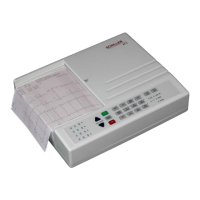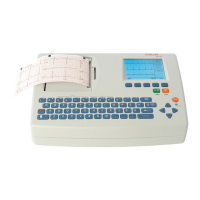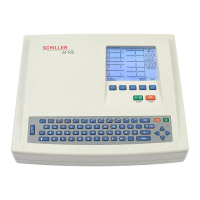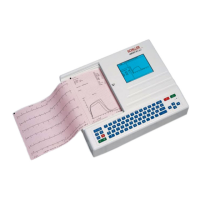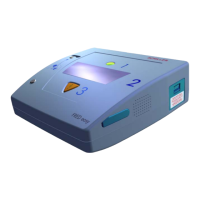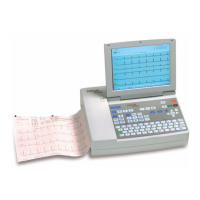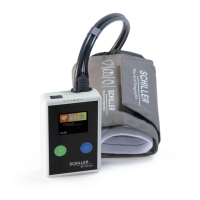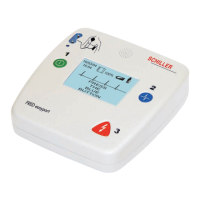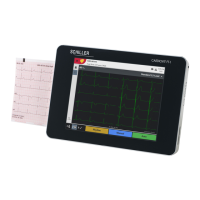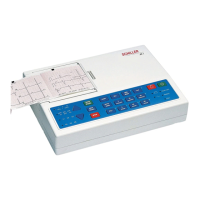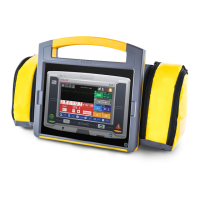What to do if my Schiller DefiSign Life Medical Equipment is out of order?
- WWesley MeyerAug 6, 2025
If your Schiller Medical Equipment indicates 'Device out of order', the suggested solution is to replace the device.
What to do if my Schiller DefiSign Life Medical Equipment is out of order?
If your Schiller Medical Equipment indicates 'Device out of order', the suggested solution is to replace the device.
What to do if the electrodes expiration date exceeded on Schiller DefiSign Life Medical Equipment?
If the electrodes expiration date has been exceeded on your Schiller Medical Equipment, replace the electrodes, then remove the battery and insert it again.
What to do if my Schiller Medical Equipment needs service?
If your Schiller Medical Equipment displays 'Device needs service', contact your sales representative.
How to fix a battery pack defect in Schiller Medical Equipment?
If you suspect a battery pack defect in your Schiller Medical Equipment, replace the battery.
Information on who can use the DefiSign Life AED.
Outlines user responsibilities, safety measures, and legal compliance.
Defines the device's purpose and intended application.
Lists situations where the defibrillator must not be used.
Guidelines for proper organizational setup and use.
Key safety precautions for operating the device.
Guidance on using the AED with other electronic devices.
Instructions for cleaning and maintaining the device.
General information and potential limitations of the unit.
Details on licensing, warranty conditions, and repair policies.
Explanation of safety symbols used in the user guide and on the device.
Overview of the AED, its function, and regulatory context.
Details on the AED's waveform, languages, metronome, and data capabilities.
Description of the device's LEDs, pictograms, and user interface.
Explanation of the AED's self-test, alarms, and operational modes.
Step-by-step guide for installing the battery and activating the device.
Procedures for checking battery status and interpreting low battery indicators.
Instructions for replacing the pre-connected electrode pads after use.
Critical instructions and safety warnings for performing defibrillation.
Detailed guidance on correct electrode placement for adults and children.
Step-by-step procedure for operating the semi-automatic defibrillation mode.
Step-by-step procedure for operating the automatic defibrillation mode.
Procedures for concluding therapy and understanding the internal safety discharge.
Method for accessing and saving intervention data using an SD card.
Schedules and procedures for regular device maintenance and inspections.
Guidelines for safely cleaning and disinfecting the AED unit.
List of available accessories, consumables, and their part numbers.
Instructions for proper disposal of the device, batteries, and accessories.
Guide to diagnosing and resolving common device problems and error messages.
Comprehensive technical specifications of the device, including dimensions and power.
Details on the device's classification and compliance with safety standards.
Information on the defibrillation waveform, energy settings, and pulse delivery.
Explains electromagnetic compatibility and recommended distances for safe use.
Lists relevant literature and provides definitions for key terminology.
A template for recording device maintenance and safety checks.
| Metronome | Yes |
|---|---|
| Operating Temperature | 0°C to 50°C |
| Device Type | AED |
| Energy Levels | Biphasic truncated exponential waveform |
| Energy Levels (Adult) | 150J, 200J |
| Energy Levels (Child) | 50J |
| Waveform | Biphasic truncated exponential |
| Voice Prompts | Yes |
| Self-Testing | Yes |
| Data Recording | Yes |
| ECG Channels | No |
| Pacing Mode | No |
| Pacing Rate | No |
| Pacing Current | No |
| SpO2 Measurement Range | No |
| NIBP Measurement Range (diastolic) | No |
| EtCO2 Measurement Range | No |
| Temperature Measurement Range | No |
| Data Storage | Internal memory |
